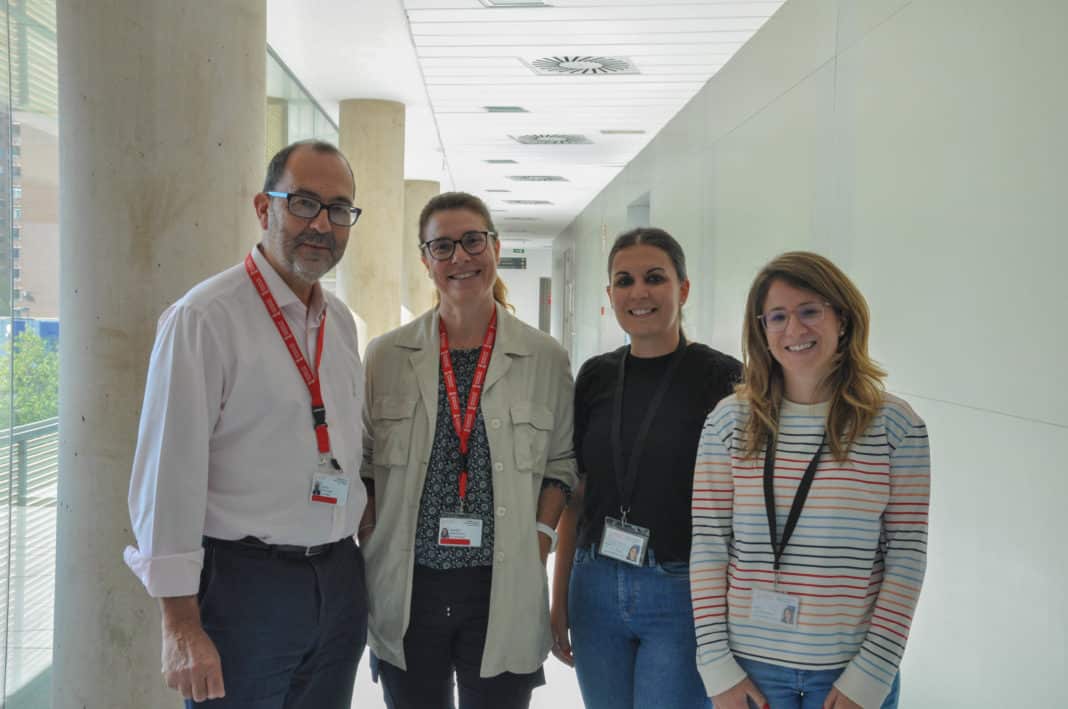- The ‘Journal of Neurology’ publishes a study by Fisabio that analyzes the sociodemographic characteristics and prevalence of this rare disease
A cross-sectional epidemiological study carried out by research staff from the Mixed Research Unit on Rare Diseases of Fisabio-Universitat de València and the CIBER of Epidemiology and Public Health shows that 225 people with Huntington’s disease were identified in the Valencian Community in a period of nine years.
The objective of this study was to obtain the sociodemographic characteristics, the prevalence and the mortality rate of patients with this minority disease in the Valencian Community.
In the European Union, rare diseases are defined as those that affect less than 5 in 10,000 people. Huntington’s disease is a rare neurodegenerative disease that affects 2 out of every 100,000 inhabitants in the Valencian Community. It is a chronic disease with a genetic basis, which is caused by a mutation on chromosome 4.
Huntington’s disease produces cognitive and motor disorders, causing affected people to manifest obsessive-compulsive disorders that imply a high level of disability and dependency. In addition, the most significant symptom is chorea, that is, a disorder of the central nervous system that causes sudden and involuntary movements.
Lucía Páramo, a researcher in the Fisabio Rare Diseases Research Institute and the first signatory of the article recently published in the Journal of Neurology , explained that “the quality of life of these patients is greatly compromised by their level of dependency”. , the overload of care that this disease implies for family members cannot be forgotten”.
Huntington’s disease entails an important social problem: these people have a significantly higher risk of suicidal behaviour, being, in fact, the second cause of death in affected people.
The research staff have analysed, based on the data offered by the Information System for Rare Diseases of the Valencian Community (SIER-CV), the distribution of the disease by sex, age group and province of residence in the period between the years 2010 and 2018. Thus, it is reflected that in the Valencian Community 225 cases of this rare disease were identified and the average age of diagnosis was 54 years.
Huntington’s disease in the Valencian Community
Of all the people identified, 50.2% of them were women and 49.8% men. Around 60% were diagnosed in a young-mature stage of life. In addition, the study shows that it is a disease with high mortality, since only an average of 6.5 years elapse between diagnosis and death.
Regarding the distribution of cases by provinces, it was higher in Alicante (52% of cases), a situation that could be due to the existence of a geographical and/or family group or cluster in this area, given that it is a disease of a hereditary nature. In the province of Valencia, the cases stood at 41% and in Castellón at 7%.
Regarding vital status, 50% of people diagnosed with this disease died during the period studied. 52% of the deceased were men and 48% women. In addition, the median age at death was 62.7 years.
“The conduct of studies based on data from the Information System for Rare Diseases of the Valencian Community, managed by the General Directorate of Public Health and Addictions and the Fisabio Foundation, highlights the usefulness of the information collected in a systematized manner by these population registries as a data source”, stated Lucía Páramo.
“Using the results of this work as a basis, the feasibility of implementing specific health policies aimed at patients and their families should be explored. These should include a comprehensive care model, which incorporates specialized follow-up for caregivers and family members, and preventive programs against suicide or promotion of physical activity, because, as some studies point out, they produce cognitive improvements in affected patients”, added the researcher.





